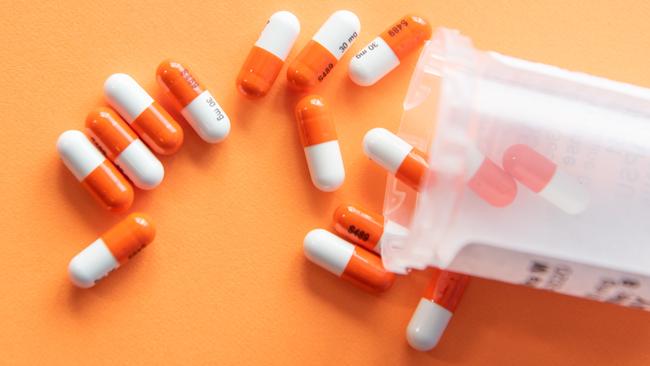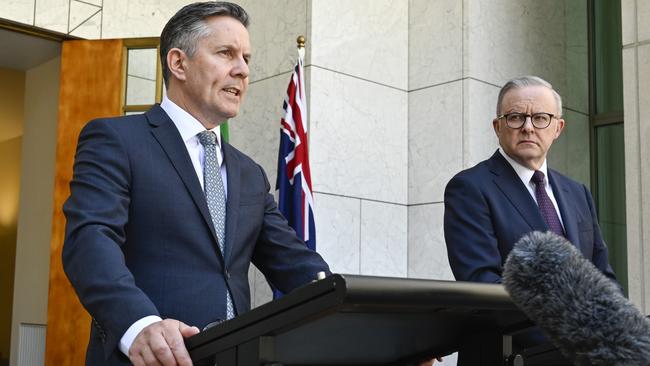Why can’t I pick up my prescription? Australia’s medicine chaos explained
ADHD drug shortages wreak havoc on patients returning to work and school. It is just one symptom of Australia’s ailing medicine access systems, explained here.

Just in time for the return of children to school last week, federal health authorities advised of yet another shortage of a medication for those with ADHD.
This time the drug Concerta – a brand of methylphenidate – has “limited availability” across eight dosages, with half of the dosage shortages set to resolved by the end of May, while the other dosages will remain scarce until at least the end of the year.
Adults with ADHD and parents of children with the condition will now need to go pharmacy-hopping in search of supplies, or get a new prescription from their doctor.
It’s a familiar scenario: there were shortages of Vyvanse from August 30 to October 21 last year, and Ritalin was scarce until just a few weeks ago, until more became available on January 24.
Of course drug shortages are not unique to ADHD medications.
Australia is in the midst of drug shortages for a range of conditions, coupled with a subsidy system that is almost unanimously deemed flawed.
Delving into the details of why the supply of ADHD medication is so disrupted shows why so many other Australians cannot get the treatment they need at the time and the price they should.
In the case of Concerta, the Therapeutic Goods Administration cited “manufacturing errors” for causing the shortage.
But ADHD drugs are one of the most chronically inaccessible categories of medicine, with worldwide shortages attributed to spikes in demand.
Until 2021, there were no government-subsidised ADHD medications available in Australia for adults, which meant patients could be paying anywhere from tens to hundreds of dollars for near-identical drugs.
Australasian ADHD Professionals Association president David Coghill said between past subsidy delays and the present rolling shortages, affordable and accessible ADHD prescriptions had never been a reality for Australian adults.
“It’s not just about access to medication, because there are workarounds for these shortages of medication, but for many people, it’s really hard to access their healthcare providers because healthcare providers are (in) short (supply) and waiting times are long,” Professor Coghill said.

“If people’s ADHD medication is not optimal, then they struggle. Kids struggle at school, they struggle in out-of-school activities, so sport or music, and they struggle at home and then out with their peers. There are really big issues for kids, and for adults it’s the same. They don’t just struggle at work.”
Australian supply is reliant on foreign drug companies, which also work under mandates from the US Drug Enforcement Administration, which sets production caps on controlled substances, namely the active ingredients in stimulant-based ADHD drugs.
It means many companies cannot scale up production to meet demand even if they wish to, leaving access “patchy”.
“ADHD medication shortages are disruptive at any time, but they can be particularly stressful when people rely on them for school or work,” said Royal Australian and New Zealand College of Psychiatrists president Elizabeth Moore.
“When there are shortages, we see people feeling they need to ration or save up their medication to avoid running out. They might have exams coming up and are worried they won’t be able to get their prescription filled.
“It’s possible for people to switch to an alternative medication, and for some people this may be necessary. But this means additional appointments with their prescriber and possibly facing long wait lists and out-of-pocket costs due to a shortage of psychiatrists. With many people facing cost-of-living pressures, this is another source of stress for them.”
The systemic flaws that have caused the supply disruption for ADHD apply equally to other medications.
Medicine in Australia
Medicine access infrastructure in Australia is divided among a web of agencies independent of government, each with a siloed assessment process.
To enter the country however, all drugs must go through the TGA, which is tasked with determining the safety, quality and viability of a drug.
Any number of stakeholders may have a role in supplying a drug or treatment once it has TGA approval, namely pharmacist wholesalers, hospitals, state health authorities and the Health Department if it is providing a federal access program. Despite the TGA having no direct role in supplying medicines to these stakeholders, it is the appointed body for managing access during a supply shortage.
While a drug will technically be available nationally after TGA approval, it will retail at the price set by its producer, often costing hundreds or thousands of dollars per dose, and is often geographically constrained. In order for the federal government to consider subsidising a drug, it must be rubber-stamped by the Pharmaceutical Benefits Scheme.
The PBS is also an independent evaluator, though its task is to find the cost-effectiveness and public necessity of certain drugs. For vaccines and immunisations, after TGA approval they go to the Australian Technical Advisory Group on Immunisation before potential listing on the National Immunisation Program
The NIP and PBS sit along with the Medicare Benefits Schedule, which lists all the treatments and medical services covered by the government. Collectively they make up the government’s health technology assessments.
Compared to the TGA, the approval process of the PBS – managed by another assessment body called the Pharmaceutical Benefits Advisory Committee – faces far harsher criticism. It has fewer mechanisms to scale up in line with demand, meets less frequently and faces longer delays on its decisions.
It is a system that even the government concedes is unfit for purpose, having commissioned three different assessments in recent years. The most recent was the Health Technology Assessment review, which provided 50 possible reforms, including a potential bridging fund to drive affordability during protracted evaluation periods.
Subsidy delays
From November last year, an investigative series by The Australian found PBAC was teetering on the brink of an administrative meltdown.
A series of private communications between the PBS, the Health Department and drug companies whose products were affected showed 45 drug decisions had been pushed from the agenda of a thrice-yearly PBS meeting.
Of those delayed, 24 were deemed “major” submissions.

The moment this was made public knowledge, Health Minister Mark Butler intervened to organise a special meeting to take on extra submissions and mitigate delays.
In the months since, stakeholders have been left fearing a future policy that caps the number of submissions considered each year. While plans for such a policy are stringently denied by the Health Department and PBS, both agencies have acknowledged the practical limitations of their assessors in private documents, and the PBS advised it would institute a “maximum total number” of drugs considered at each meeting since its mass deferral in late October.
While some subsidy decision delays may only hold back access to drugs with plentiful alternatives, or impact alterations to existing subsidies, it has previously affected cancer treatments, chronic-disease medications and drugs for conditions with no readily available alternative.
The Health Department estimates the PBAC will require years of work to reform, all the while being battered by a rising rate of submissions routinely beyond capacity.
Medicine shortages
Independent to the struggles of the PBS and PBAC, major medical groups have lobbied for reform to the TGA’s medicine shortages strategies, hoping to get one step ahead of an increasingly unpredictable international market.
Australia has a very limited local drug production industry, leaving it reliant on global supply chains that the Covid pandemic proved to be fraught.
There are currently more than 400 ongoing drug shortages, according to the TGA’s shortage database, while the Royal Australasian College of Physicians estimates 27 per cent of Australians are experiencing a shortage in a prescription drug they rely on.
With a consultation process under way to seek remedies to the chronic shortage, a slew of criticisms generally relegated to discussion within the medical community have made their way into public view.
The Australian Medical Association, Pharmacy Guild and RACP all called for more transparent information sharing and a dedicated authority for pre-empting and mitigating access droughts.
Currently ad hoc working groups are formed to respond to specific shortages as they arise, though a dedicated Medicine Shortages Working Party was formed during the pandemic and disbanded in 2021.
The AMA made its pitch for a single regulator, which the Guild echoed, having seen its prior appeals for the return of the Medicine Shortages Working Party denied.
Beyond shortages of ADHD medicine, drugs also regularly affected include hormone replacement therapies, weight-loss drugs and opioid painkillers.
In the recent past, federal access schemes, like the Take Home Naloxone program, have been undermined by rocky access.





To join the conversation, please log in. Don't have an account? Register
Join the conversation, you are commenting as Logout